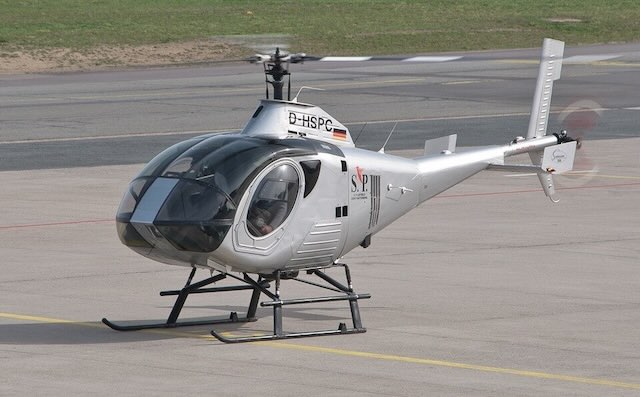S330 / S333
Summary
| Category | Military Training Aircraft |
| Origin country | 🇺🇸 United States |
| Manufacturer | Schweizer |
| First flight | 14 June 1988 |
| Year introduced | 1992 |
| Number produced | None units |
Description
In 1987, Schweizer Aircraft Corporation announced the development of the Schweizer 330, a turbine-powered helicopter derived from the piston-engined S300. The project's goal was to leverage the proven dynamic components of the S300 while introducing a new, more spacious four-seat fuselage and an Allison 250-series turboshaft engine. A converted 300C served as the first prototype, achieving its maiden flight on June 14, 1988, with FAA certification following in September 1992. The improved 330SP model was introduced in 1997. Building on this airframe, Schweizer then developed the S333, a significant upgrade featuring enhanced dynamic components and rotor systems. The company was acquired by Sikorsky Aircraft in 2004, which briefly rebranded the helicopter as the S-333, before Schweizer R.S.G. reacquired the line in 2018.
The design of the Schweizer 330 integrates the rotor, controls, and dynamic systems of the earlier S300C model with an entirely new airframe. This updated structure incorporates a modern four-seat cockpit and cabin, along with new instrumentation. The helicopter is powered by a Rolls-Royce M250-C20W turboshaft engine, derated to provide consistent performance, particularly in hot and high-altitude conditions up to 18,000 feet. The subsequent S333 variant introduced further refinements, including new-technology rotor blades with a cambered airfoil (NACA 0015 modified) and an increased rotor diameter. These aerodynamic and systemic improvements result in a nearly 30% increase in performance, providing a greater useful load and higher cruise speeds.
The Schweizer 330/S333 has served globally in both military and civil roles, establishing a reputation as a versatile light utility and trainer helicopter. Its primary military operators include the Dominican Air Force and the Royal Saudi Land Forces, where it is valued for missions such as training. The S333’s performance characteristics and direct operating costs, which are comparable to other light turbine helicopters, make it an ideal platform for initial turbine aircraft instruction. After Sikorsky acquired Schweizer in 2004, the rapid prototyping technology used in the 333's development was leveraged by the parent company for projects like the X-2 Technology Demonstrator.
Main Variants
- 330: The initial turbine-powered model, it featured the dynamic components of the S300C paired with a new four-seat fuselage and a Rolls-Royce 250-C10A engine.
- 330SP: An improved version featuring an upgraded rotor, raised skids for greater ground clearance, and a more powerful Rolls-Royce 250-C20W engine.
- 333: A significantly upgraded model with newly developed dynamic components and advanced-technology rotor blades that deliver a substantial increase in performance.
- RQ-8/MQ-8 Fire Scout: An unmanned aerial vehicle (UAV) derivative developed with Northrop Grumman, it features a unique fuselage, a new fuel system, and a four-bladed main rotor.
- Sikorsky S-434: A newer version based on the S333, it incorporates design improvements developed for the MQ-8B Fire Scout, most notably a four-bladed main rotor.
Technical specifications
| Version: S333 | |
|---|---|
| Crew | 1 |
| Operational range | 590 km (367 mi) |
| Maximum speed | 194 km/h (121 mph) |
| Wing area | 55.2 m² (594.2 sqft) |
| Wingspan | 8.4 m (27.5 ft) |
| Height | 3.4 m (11.0 ft) |
| Length | 9.5 m (31.2 ft) |
| Empty weight | 549 kg (1,210 lbs) |
| Max. takeoff weight | 1,157 kg (2,551 lbs) |
| Climb rate | 7.0 m/s (23.0 ft/s) |
| Powerplant | 1 x Rolls-Royce M250-C20W turboshaft engine delivering 213 kW each |
Current operating countries
| Country | Units | ||
|---|---|---|---|

|
Mexico | 10 | |

|
Dominican Republic | 2 | |
All operators
